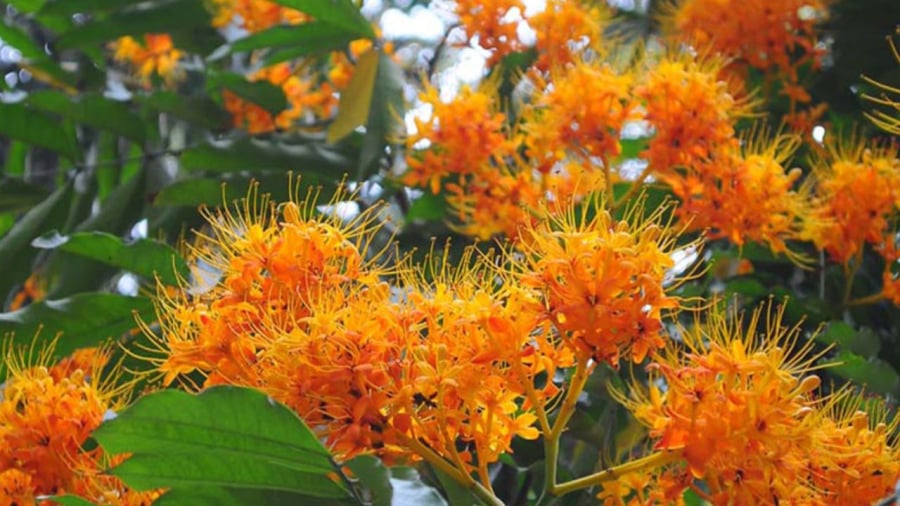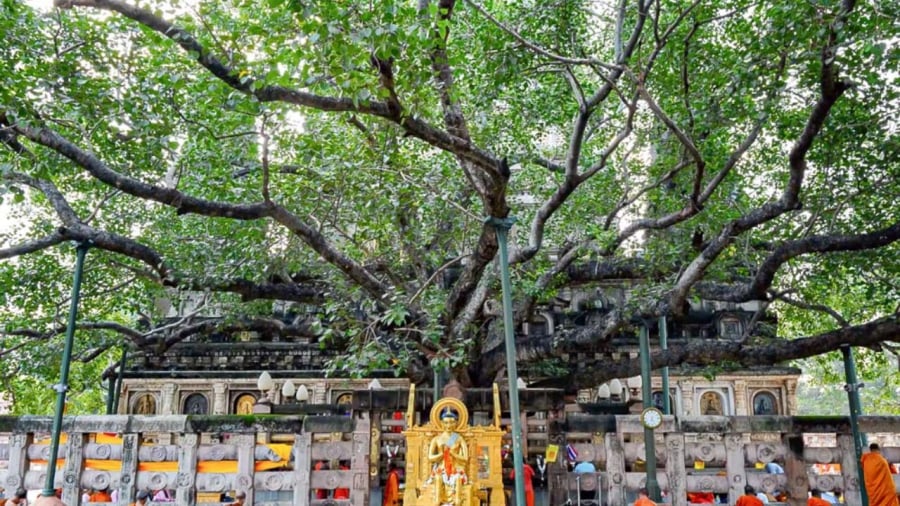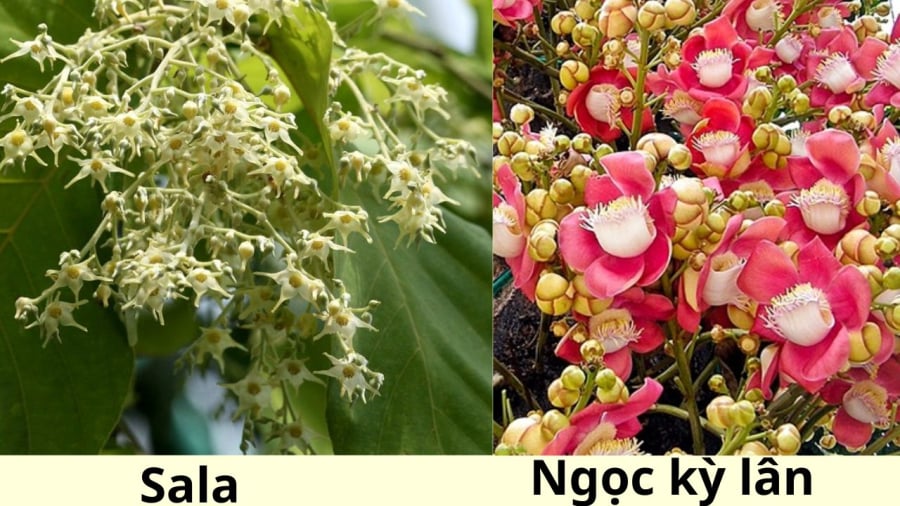In the historical flow of Buddhism, the image of the Buddha is not only present through his compassionate and wise teachings but also intimately connected to sacred natural symbols. Among them, three ancient trees stand out: the Ashoka, Bodhi, and Sala trees. Each holds a special significance as they witnessed the most important milestones in the life of Gautama Buddha, from his birth, enlightenment to his ultimate passing into Nirvana. Let’s explore the profound meanings of these three sacred trees and why they have become spiritual icons in the hearts of Buddhists worldwide.
1. The Ashoka Tree (Saraca asoca) – Witness to the Buddha’s Birth
Native to India and now commonly found in Vietnam, especially Hanoi, the Ashoka tree, known locally as the “Vang Anh,” holds a special place in Buddhist lore. According to legend, Queen Maya, on her way to her parent’s home to give birth to her first child, as was the custom, rested in the Lumbini Garden, where she encountered an Ashoka tree in full bloom.

It is said that Queen Maya, captivated by the tree’s beauty, reached out to touch its branches, and it was then that she gave birth to Siddhartha Gautama, the future founder of Buddhism. The newborn prince immediately stood up and took seven steps, with a lotus flower blooming at each step. The name “Ashoka” translates to “without sorrow,” symbolizing a life free from worry and anguish, a blessing for a peaceful existence. In Buddhism, the Ashoka tree represents not only the birth of an enlightened being but also the liberation from suffering.
The Ashoka tree is widely cultivated in temples and parks, including around Hoan Kiem Lake in Hanoi, serving as a living reminder of the Buddha’s birth and a symbol of freedom from worldly concerns.
2. The Bodhi Tree (Ficus religiosa) – Where the Buddha Attained Supreme Enlightenment
The Bodhi tree is a sacred fig tree and holds immense significance in Buddhism. It was under this very tree in Bodh Gaya, India, that Siddhartha Gautama, having renounced his royal heritage, meditated for 49 days and nights, ultimately attaining enlightenment and becoming the Buddha in 588 BCE.
Bodhi trees have large, heart-shaped leaves and possess a vigorous vitality. They symbolize wisdom, awakening, and resilience. It was beneath this tree that the Buddha gained profound insight into the nature of existence, setting in motion his mission to share the path to liberation with all sentient beings.

Today, many Buddhist temples feature Bodhi trees as a symbol of enlightenment and wisdom. While large Bodhi trees are typically associated with temples, families can cultivate smaller bonsai versions or display Bodhi leaves and artwork in their homes, serving as a reminder of the Buddha’s teachings and a source of calm and focus.
3. The Sala Tree (Shorea robusta) – Witness to the Buddha’s Passing into Nirvana, Often Misidentified
The Sala tree, also known as the “Shala” tree, holds a significant place in Buddhist scripture. It is said that the Buddha entered Nirvana during the season when the Sala trees were in full bloom. At the age of 80, having completed his mission of spreading the Dharma, the Buddha lay down between two Sala trees and peacefully passed away.
Sala flowers are white, fragrant, and possess a stately beauty. They symbolize completion and liberation from earthly attachments. In Buddhist culture, the Sala tree represents “the return” to one’s true nature, to the state of Nirvana, transcending the cycle of birth and death.

Today, Sala trees are often planted at Buddhist memorial sites, and the image of the twin Sala trees is a common artistic motif in depictions of the Buddha’s passing, reflecting the deep reverence and respect Buddhists hold for their enlightened teacher.
However, it is important to note that there is a common misidentification of the Sala tree. The tree with red-flowered “Gem-horned” (or “Ngoc Ky Lan” in Vietnamese) flowers, native to Sri Lanka, is often mistakenly referred to as the Sala tree. The true Sala tree of Buddhist scripture, Shorea robusta, with its white flowers, is native to the Indian subcontinent’s original forests.
While Ashoka and Bodhi trees can be cultivated in homes and gardens, the Sala tree of the Buddha’s time is challenging to come by for most families.
The Ashoka, Bodhi, and Sala trees, witnesses to the Buddha’s birth, enlightenment, and passing, have become immortal symbols in the hearts of millions of Buddhists worldwide. They not only commemorate pivotal events in the Buddha’s life but also convey profound messages about life, awakening, and liberation. Paying homage to, planting, or caring for these trees is not just an act of reverence but also a way for Buddhists to embody the ideals of a peaceful, compassionate, and wise existence.
For reference and contemplation only






























